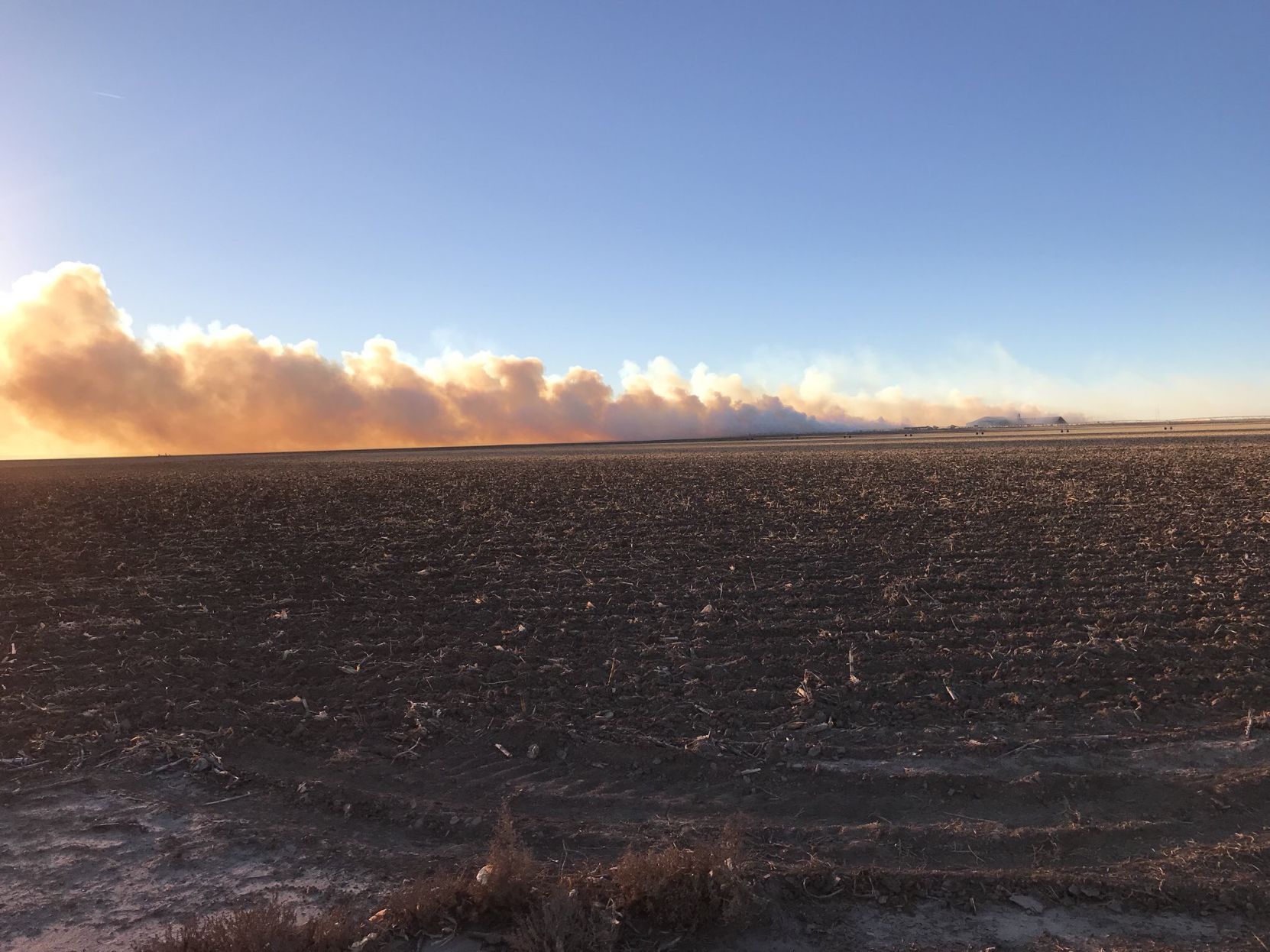A southwest Kansas cotton gin has lost about 400 round modules after a fire broke out on the gin yard Jan. 6.
Northwest Cotton Growers Co-op Gin General Manager Jerry Stuckey said Jan. 7 that crews had dug a pit at the Moscow, Kansas, gin and were pushing the burning cotton into it.
“We should have everything about buried,” said Stuckey, adding, “We contained the fire last night.”
Stuckey said the fire occurred when an ember from inside the gin ignited a burr pile outside the facility.
“The 45-mph winds blew embers for a half mile,” Stuckey said.
The gin near Moscow, Kansas, which wasn’t affected by the fire, was shut down until crews could fully inspect the yard, said Mindy Gillespie, who is also with the gin.
It’s the second module fire at a Kansas gin in the past two months. Gary Feist, the general manager at Southern Kansas Cotton Growers, which has gins at Winfield and Anthony, said a module fire occurred Nov. 27 at the Anthony location, burning about 250 round modules.
In southern Kansas, one round module is roughly three finished bales of cotton worth about $350 each, Feist said. He estimated the loss at his gin at about $300,000.
Stuckey wasn’t sure of the total loss at his gin. He said because of the limited availability of short-season cotton, farmers in his territory planted medium-season varieties to get the sought-after 2,4-D resistance. Because of that, some of the cotton isn’t as mature at harvest. Thus, round modules in this region are yielding about two to 2.5 finished bales.
“It is a little long for us and then we didn’t have heat in August and September,” Stuckey said of the cotton variety.
Smoldering module
Feist said the fire at his gin was caused from a fire inside one of the modules. Part of the problem for Feist is the dry weather and that cotton strippers and pickers are still in the field harvesting cotton because of this year’s large crop. The crop is brittle and breaks off easily, he said.
A stick can rub against something like a rock that got into the machine, or a hot bearing could give off a spark and get trapped inside the bale.
“That thing can smolder inside there, and you can’t smell it or anything,” he said. “It can smolder there for a long time.”
He said his gin doesn’t haul in the modules for at least a week after being harvested. The modules are put into groups—or pods—which can have up to $400,000 worth of cotton in each group, he said. His gin doesn’t normally put that much in a group for safety reasons.
“We are still harvesting this big crop, and we are harvesting a lot later than normal,” he said.
Kansas farmers were poised to harvest a record 185,000 bales for the 2017 season—a 161 percent increase from the previous year, according to the National Agricultural Statistics Service. That is on about 91,000 acres, which is up 60,000 acres from 2016.
Sign up for HPJ Insights
Our weekly newsletter delivers the latest news straight to your inbox including breaking news, our exclusive columns and much more.
Feist said his two locations are expected to gin somewhere between 70,000 to 80,000 bales from 40,000 acres.
Stuckey said the 2,4-D resistant cotton is part of the reason for the uptick in southwest Kansas acres. His facility has already ginned 24,000 bales. By the end of the season, he expects to gin about 60,000 for the 2017 crop year.
That’s up from 10,500 bales in 2016, and just 4,500 bales in 2015, he said.
Amy Bickel can be reached at 620-860-9433 or [email protected].



